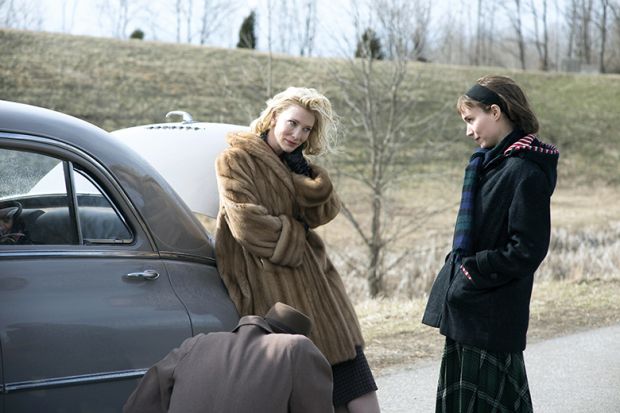The recent release of Chanya Button’s period drama, Vita and Virginia, about the love affair between Vita Sackville-West and Virginia Woolf, has attracted much attention (if not overwhelmingly positive reviews). This is because its sole focus is a relationship portrayed many times before but rarely at the forefront of a narrative. Clara Bradbury-Rance’s book attends, in detail, to such a turn towards what she calls “lesbian visibility” in the age of digital cinema and, conversely, the “troubling” ways in which the lesbian subject has been erased. To this end, she specifically focuses on lesbian identity in contemporary cinema and its contextualisation through the convergence of queer and feminist discourses. But she does not simply offer up a critical overview of contemporary lesbian cinema. Rather, she draws close attention to each film’s industrial, aesthetic and cultural contexts, which invariably shape their representation of a range of lesbian experience, even in the most celebrated examples such as Todd Haynes’ Carol (2015).
Most striking here are Bradbury-Rance’s timely and lucid reflections on the history of the lesbian’s cinematic image in order to explore, as she puts it, “her constitution as figure in the present”. Films such as Abdellatif Kechiche’s Blue is the Warmest Colour (2013), David Lynch’s Mulholland Drive (2001) and Céline Sciamma’s Water Lilies (2007) are viewed as new developments in the construction of lesbian screen identity: multifaceted, nuanced and formally enhanced through techniques such as camera movement and point-of-view shots. By contrast, Atom Egoyan’s dark, erotic thriller Chloe (2009) tends to present, for Bradbury-Rance, a certain type of lesbian sexuality historically associated with danger and disturbance. Chloe – a prostitute involved in a triangular relationship with a married couple – is an embodiment of lesbian impotence, punishment and menace.
Towards the end of the book, Carol is affirmed as a key example of the lesbian gaze, owing a great debt to film-makers such as Douglas Sirk and Alfred Hitchcock and, more generally, the film noir genre, which Haynes both interrogates and playfully evokes. The film radically alters the way we think about lesbian desire through the familiar territory of the thriller/film noir, opening viewers up to “queer pleasure” through its use of themes otherwise associated with patriarchal identity and heteronormativity. Instead of watching an obsession develop between the male and female characters of a Hitchcock film such as Vertigo (1958), Carol is all about looking, experiencing and desiring the other’s gaze as expressed through two women. Its mainstream appeal and awards success mark it out, further, as a new stage in the depiction of queer pleasure in the digital age.
Bradbury-Rance’s investment in the specific representation of the lesbian in the age of digital cinema seems very precious. With the figure of the lesbian becoming increasingly visible, as demonstrated by Button’s new film, greater understanding of this changing field of representation is urgently required.
Davina Quinlivan is a senior lecturer in film studies at Kingston School of Art, Kingston University and the author of Filming the Body in Crisis: Trauma, Healing and Hopefulness (2015). She is currently working on a monograph about the cinema of Joanna Hogg and an exploration of Venice and film.
Lesbian Cinema After Queer Theory
By Clara Bradbury-Rance
Edinburgh University Press
208pp, £75.00
ISBN 9781474435369
Published 31 March 2019




